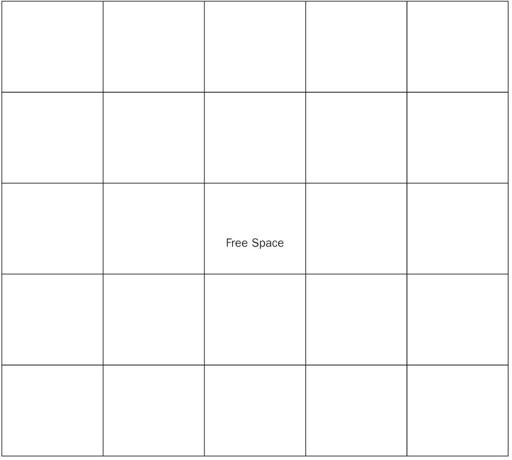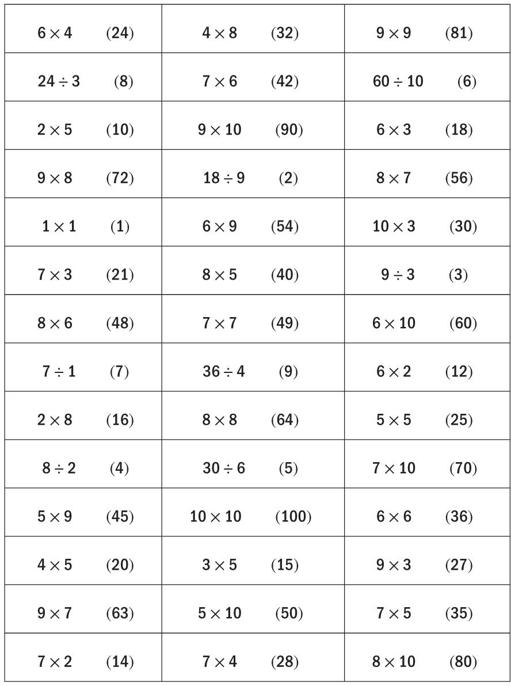Teaching the Common Core Math Standards With Hands-On Activities, Grades 3-5 (6 page)
Read Teaching the Common Core Math Standards With Hands-On Activities, Grades 3-5 Online
Authors: Judith A. Muschla,Gary Robert Muschla,Erin Muschla-Berry
Tags: #Education, #Teaching Methods & Materials, #Mathematics, #General

BOOK: Teaching the Common Core Math Standards With Hands-On Activities, Grades 3-5
3.02Mb size Format: txt, pdf, ePub
Problem Bank for Multiplication and Division Bingo
Operations and Algebraic Thinking: 3.OA.8
“Solve problems involving the four operations, and identify and explain patterns in arithmetic.”
8. “Solve two-step word problems using the four operations. Represent these problems using equations with a letter standing for the unknown quantity. Assess the reasonableness of answers using mental computation and estimation strategies including rounding.”
Background
Solving two-step word problems requires several steps:
1.
Read the problem carefully.
2.
Identify what you are to find.
3.
Decide what information to use.
4.
Write an equation using a letter to stand for the unknown quantity.
5.
Solve the equation.
6.
Check to see if your answer makes sense.
Activity: Which Equation?
Working in pairs or groups of three, students will choose an equation that can be used to solve word problems. They will then solve the problem.
Materials
Reproducible, “Two-Step Word Problems,” for each pair or group of students.
Procedure
1.
Review the steps for writing and solving two-step word problems that were presented in the Background of this activity.
2.
Hand out copies of the reproducible. Explain that it contains five word problems, each of which is followed by two equations. Students are to select the equation that can be used to solve the problem. They must then solve the problem.
3.
Depending on the abilities of your students, you might find it helpful to do the first problem together as a class.
4.
Emphasize that after students have selected the correct equation and solved a problem, they must consider whether their answer makes sense by using estimation or mental math. For example, imagine an answer to a problem that the cost of a school lunch is $175. This is unlikely. A probable mistake here is omission of a decimal point that would make a correct (and reasonable) answer of $1.75.
Closure
Discuss the answers to the problems, including students' assessments of the reasonableness of their answers. Ask how they determined if an answer made sense.
Answers
The correct equations are listed, followed by their solution.
(1)(2)
(3)
(4)
(5)
Other books
Bunny and Shark by Alisha Piercy
Snapshot by Linda Barnes
Wicked Christmas Eve by Eliza Gayle
Afternoon Delight by Kayla Perrin
The Hunt by Brad Stevens
Blown Away by Sharon Sala
Purling Road - the Complete Second Season: Episodes 1-10 by M L Gardner
Under the Banner of Heaven by Jon Krakauer
Somewhere Along the Way by Jodi Thomas
Las siete puertas del infierno by David Camus









